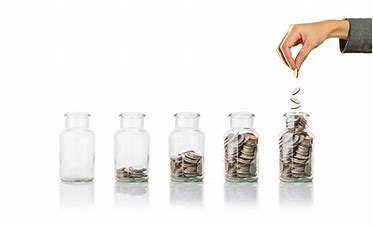There are fewer film releases, high liabilities, and logistical hurdles
09/12/2022
There is still no happy ending for movie theaters after the shock caused by the Covid-19 pandemic. And this saga will have more chapters. Last Wednesday, British giant Cineworld filed for protection from creditors in the United States. In Brazil, as companies still try to overcome the challenges posed by the health crisis, new obstacles emerge.
The sector’s perspective is that everything will be back to normal by the end of 2023. But it is necessary to deal with the slower pace of premieres compared to before the pandemic. Other problems include high losses caused by lower revenues, logistical hurdles, long lead times for the delivery of spare parts – for projectors, for example – and tougher negotiations with shopping malls for rented spaces.
The federal government submitted a budget bill late in August which, if approved, extinguishes Condecine. This contribution aimed at the national film industry collected R$973 million in 2021. It is the main source of funds for the promotion of audiovisual production in Brazil.
The potential loss of this money is concerning because one of the biggest barriers to a more consistent return of the audiences at this time is the lean catalog of films, especially the big box office ones.
In 2019, the sector was in a good situation, with an year-over-year growth of 13.5% in box office income, to R$2.8 billion, and an audience of 176 million spectators. In 2021, it reached 29% of that. Now average attendance is half of that of 2019.
“We have 60% of the normal number of films for that period,” said Marcos Barros, who chairs the board of CineSystem and the Brazilian Association of Multiplex Operating Cinema Companies (Abraplex), whose members represent half of Brazilian theaters. In 2021, 308 films were released, 30.6% below 2019, according to Ancine data.
The number of movies is likely to take time to resume the pre-pandemic levels after operations were interrupted during the most critical period of Covid-19, said Marcelo Lima, director of Expocine, an event focused on the audiovisual market that will hold its ninth edition this month. The vast majority of the films were shot by 2019.
Márcio Fraccaroli, director of film distributor Paris Filmes, also highlighted that the film stock “got old.” According to him, the shortage also reflects the lack of public policies for Brazilian filmmaking, which has pushed many production companies to streaming services. “We are in the phase of looking for content,” he said.
This year, the company is expected to distribute 17 to 19 movies, well below the more than 30 average seen before the pandemic. “Next year will still be bad for Brazilian releases, and the domestic audiovisual industry helps to bring the public back. Besides the economic issue, we have this problem. The audience in other Latin American countries, for example, is already at 75% to 80% of that seen in 2019,” he said. In Brazil, the death by Covid of actor and comedian Paulo Gustavo, who used to draw large audiences, was a blow.
Warner Bros, the behemoth that distributes Universal Pictures films, released this year 19 movies in Brazil but foresees more releases until December.
Some people are optimistic about the schedule of premieres in 2023. Juliano Russo, chief commercial and marketing officer of Cinépolis Brasil, cited new superhero movies as a driver. “We are very optimistic with the recovery curve. Next year may surprise and stay close or equal to the audience of 2019,” he said. The Mexican chain arrived in Brazil in 2010 and has 57 theaters and 423 screens. Among the current obstacles, Mr. Russo said, are the longer deadlines to import chocolates and candies.
/i.s3.glbimg.com/v1/AUTH_37554604729d4b2f9f3eb9ad8a691345/internal_photos/bs/2022/s/q/JOhmvWRFKV4m0eeldh3w/020922patriciacotta35.jpg)
Patricia Cotta — Foto: Leo Pinheiro/Valor
Patricia Cotta, the marketing manager of the Kinoplex chain, is also confident that 2023 will be a year of blockbuster releases and said that the company has been betting on aggressive pricing strategies to win back the audience and get them back into the habit of going to the movies. It launched, for example, a passport that gives discounts on all sessions, including weekend ones. There were even promotions of two tickets for R$11 (less than $2).
“People are responding very quickly to promotions. This shows that they need to make ends meet to have entertainment.” From January to July, Kinoplex received 5 million people, up 220% from 2021, but still down from the 9 million seen in 2019. The network has 271 theaters in 19 cities.
With an eye on this, some companies have joined forces to offer tickets for R$10 between September 15 to 21. However, it is still necessary to deal with the high cost of operation while revenue does not return to normal levels and financial health continues to be shaken by the period when movie theaters closed. Between 2019 and 2021, 241 theaters closed. There are 3,266 operating now, but more theaters may still close this year.
The groups struggled in recent years. They sold popcorn with delivery and held drive-in movie sessions, but none of this paid off. So, in addition to joining federal programs of reduced working hours and suspension of labor contracts, the sector tapped an emergency line of credit offered by Ancine and the Brazilian Development Bank (BNDES), which totaled R$400 million.
For small companies, loans are non-reimbursable. Larger networks have at least eight years to pay, and interest rates are much lower than market rates, Mr. Barros said. With 160 theaters, Cinesystem took a credit of R$40 million. “Very possibly we will negotiate to extend this term because the audiences have not returned,” he said. The company, which is listed on the stock exchange, ended the second half of this year with revenues of R$59.5 million, 530.5% above 2021, but still 33% below the same period of 2019.
Cinépolis and Cinemark have also tapped this line of credit and took R$35.3 million each in loans. Cinépolis does not disclose financial figures. Cinemark, a public company listed in the United States, posted higher revenues in Brazil in the first half – $87.9 million, up from $9.9 million in the same period last year. The company holds 30% of the Brazilian cinema market, with 626 screens in 86 theaters in 48 cities. The company declined to comment.
*By Raquel Brandão — São Paulo
Source: Valor International

/i.s3.glbimg.com/v1/AUTH_37554604729d4b2f9f3eb9ad8a691345/internal_photos/bs/2022/j/q/5qUVRTS32ATE0ioBs0Tg/12bra-100-municip-a5-img01.jpg)


/i.s3.glbimg.com/v1/AUTH_37554604729d4b2f9f3eb9ad8a691345/internal_photos/bs/2022/p/9/PGbrjhTeaabpdht0wBAA/09emp-100-diamante-b2-img01.jpg)
/i.s3.glbimg.com/v1/AUTH_37554604729d4b2f9f3eb9ad8a691345/internal_photos/bs/2022/9/1/Z1ZkQKRMGLHr7GoLeTBg/nilton-20saraiva-20-20divulga-c3-a7-c3-a3o.jpg)
/i.s3.glbimg.com/v1/AUTH_37554604729d4b2f9f3eb9ad8a691345/internal_photos/bs/2022/g/P/8OABIQToCvaqpEC1DLjg/ricardo-20berni-20.jpg)
/i.s3.glbimg.com/v1/AUTH_37554604729d4b2f9f3eb9ad8a691345/internal_photos/bs/2021/Q/S/AhDE5qQFOztFG3XCSkZw/benja.jpg)
/i.s3.glbimg.com/v1/AUTH_37554604729d4b2f9f3eb9ad8a691345/internal_photos/bs/2022/S/u/XBkdS8SpqRinI6Vb6vDQ/08fin-100-selic-c1-img01.jpg)

/i.s3.glbimg.com/v1/AUTH_37554604729d4b2f9f3eb9ad8a691345/internal_photos/bs/2022/m/L/6W3k4cRhidfVvog8Ptvw/dsc-4274.jpg)